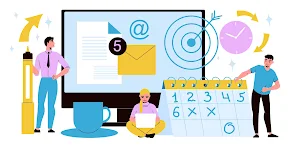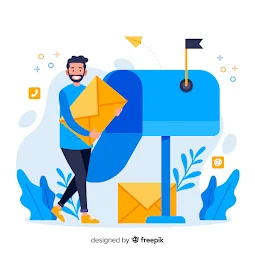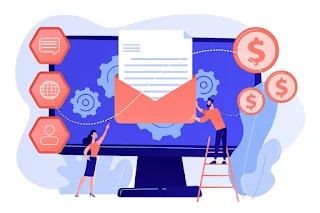India’s AI revolution just got a major boost. On August 19, 2025, OpenAI launched ChatGPT Go, a budget-friendly subscription plan tailored for Indian users, priced at ₹399 per month with seamless UPI payment support. This move makes advanced AI tools more accessible to millions, positioning India as a testing ground for OpenAI’s global affordability strategy. Ready to dive into what this means for you? Let’s break it down.
Why ChatGPT Go Matters for India
What is ChatGPT Go?
Key Features of ChatGPT Go
- 10x more image generations: Create visuals for projects or marketing
- Upload 10x more files:Manage up to 10x more documents, spreadsheets, and various file types with improved efficiency and organization tools.
- 2x longer memory: Enjoy personalized, context-rich responses
- Access GPT-5: OpenAI’s most advanced model.
- Enhanced Indic language support: Communicate seamlessly in regional languages
Why INR Pricing and UPI Support Are a Big Deal
ChatGPT Subscription India: Pricing Breakdown
Current Pricing in India (INR)
- ChatGPT Free: ₹0/month (limited usage)
- ChatGPT Go: ₹399/month (10x more features)
- ChatGPT Plus: ₹1,999/month (advanced features)
- ChatGPT Pro: ₹19,999/month (unlimited usage)
- ChatGPT Team: ₹2,999/month per user (collaboration features)
Value Comparison: Go vs Plus
- Perfect for casual to moderate users
- 10x free tier capabilities
- Essential AI features
- Local payment support
- 5x more expensive than Go
- Advanced features like custom GPTs
- Priority access during peak times
- Unlimited image generation
Game-Changer: ChatGPT Go UPI Payment
Why UPI Support Matters
- Instant transactions without credit card requirements
- No international payment fees
- A familiar payment method used by 300+ million Indians
- Bank account direct debit without intermediary services
- International credit card requirements
- Currency conversion fees
- Payment gateway failures
- Complex subscription management
How to Subscribe Using UPI
- Visit ChatGPT's subscription page
- Select "ChatGPT Go" plan
- Choose UPI as a payment method
- Complete payment through your preferred UPI app
- Start using enhanced features immediately
Who Should Choose ChatGPT Go?
Perfect For:
- Students and researchers need document analysis
- Content creators requiring image generation
- Small business owners seeking AI assistance
- Freelancers working on diverse projects
- Tech enthusiasts exploring AI capabilities
Not Ideal For:
- Enterprise users needing unlimited usage
- Power users requiring custom GPT creation
- Teams needing collaboration features
- Developers building AI-integrated applications
Real-World Example: How ChatGPT Go Helps Indian Users
Why India is OpenAI’s Testing Ground
- Affordability: ₹399 is a fifth of the Plus plan’s cost
- Financial accessibility: Rupee-denominated pricing and UPI payments lower transaction barriers.
- Market adaptation: Enhanced regional language support meets India's varied linguistic requirements.
Limitations of ChatGPT Go
- No access to legacy models like GPT-4o
- Excludes Sora video generation and Codex agent features
- No third-party connectors or API usage (billed separately)
- Usage limits, while higher, aren’t quantified (e.g., exact message caps vary by hardware)
How ChatGPT Go Fits into India’s AI Landscape
ChatGPT Go vs Competitors: India AI Market
Direct Competitors
- Integrated with Google Workspace
- 2TB cloud storage included
- Advanced reasoning capabilities
- Office 365 integration
- Priority access to GPT-4
- Creative image generation
- Longer conversation memory
- Document analysis capabilities
- No image generation
Unique Advantages
- Lowest premium pricing in Indian market
- Local payment integration with UPI
- Balanced feature set for general users
- OpenAI's proven reliability and updates
Tips to Maximize ChatGPT Go in 2025
Optimize Message Usage
- Break complex queries into smaller, focused prompts
- Apply GPT-5's superior problem-solving skills to development projects and analytical challenges.
- Benefit from the extended memory capability, lasting twice as long, for more effective follow-up questioning.
Boost Content Creation
- Generate images for social media or blogs (e.g., infographics)
- Upload files like PDFs to summarize or analyze
- Draft multilingual content with Indic language support
Streamline Workflows
- Use advanced data analysis for spreadsheets or reports
- Organize tasks and projects with custom GPTs
- Automate repetitive tasks like email drafting
The Future of ChatGPT Go in India
- Annual billing: To lock in savings for long-term users
- Increased local language options: Scaling up from the current 12 Indic language offerings.
- Localized integrations: Partnerships with Indian apps or platforms


















